Naegi Castle Site
Overview of Naegi Castle Site
Naegi Castle was built in 1526 by Toyama Masatoshi (dates unknown), whose family had served as local administrators of shogunal estates since the fourteenth century (Kamakura period). The sixteenth century was a time of fierce rivalries among the powerful warlords of the surrounding region, and Mt. Takamori, with its steep, rocky terrain, made the Toyama fortress highly defensible.
The Toyama formed relations by marriage with the Oda family of Owari province to the south as well as with the powerful Takeda family of Kai province to the east. From their seat at Naegi castle, they managed to maintain their family line through the tumultuous sixteenth century and, after a brief interim, on into the subsequent Edo period (1603–1867). The castle was occupied by the Toyama family for 270 years until 1871. The newly established Meiji government, which embarked on a policy of rapid modernization from 1868 onward, viewed castles as symbols of the past. Naegi Castle was one of the many castles abandoned and dismantled at that time.
The castle site is located on the north bank of the Kiso River. In the past, the river acted as a partial moat, affording defenders yet another level of protection. In addition to the surviving stone retaining walls, the castle once had gates, watchtowers, enclosures, and the main keep at the top. Today, the supports of the Castle Observation Tower are based in postholes in the rock made to construct the original main keep overlooking the Nakatsugawa area.
In 1981, the castle was designated a National Historic Site, and in 2017, it was recognized by the Japan Castle Foundation as one of the great castles of Japan.
苗木城跡の見どころ What to See at the Naegi Castle Site
The castle stands on a natural outcrop of gigantic boulders and commands a 360-degree view of the surrounding territory. The retaining walls in various styles of stonework that can be seen on the mountain were skillfully built among existing rocks and boulders to support the approach and castle structures.
The main gate of the castle is located at the foot of the mountain on the north bank of the Kiso River. A steep path with 48 sharp turns leads to the top of the mountain from the main gate. The main keep (tenshu) of the castle stood on the summit, and other gates and buildings originally stood along the path.
1. Site of foot soldier headquarters
There were several buildings at the base of the mountain where foot soldiers would stop to report for duty before entering the castle. Foot soldiers were the lowest-ranking samurai and typically fought on the front lines during battles. The original buildings included a captain’s office and facilities for training.
2. Site of Oyagura Tower
A three-story watchtower was built here in the mid-seventeenth century. It was the largest watchtower in the castle complex. The stone walls enclosing the first floor, which was mainly used for storage, remain standing. Loopholes in the walls were used in defense of the north side of the castle.
3. Site of the second enclosure
The ninomaru enclosure (secondary circle of defense) was the location of the Toyama family residence and had rooms for retainers to assemble in.
4. Site of the Sengoku well
Despite its high elevation on the mountain near the main keep, this well is known as never having gone dry, even in the worst drought. Its name, “one thousand stones,” derives from the reputation it has held as a well that could provide water for “a thousand” (that is, “many”) people. Clean water can still be drawn from the well today.
5. Site of the weapons storehouse
This storehouse was primarily used to store guns and bows. Most of the foundation and edging stones under the eaves remain as they once were.
6. Site of the Kasagiyagura Tower
A three-story watchtower stood on this site on the west side of the honmaru (main enclosure). Note that the structure would have been built on top of a group of huge boulders. It commands a fine view of Mt. Kasagi to the west.
7. The main keep
The main keep of the castle was built on a series of support pillars directly atop two colossal boulders at the mountain’s summit. Its original dimensions were 9 meters wide by 11 meters long. The keep was designed to appear on the outside as three-stories high to deceive enemies. On the inside, however, the true dimensions of the bottom two levels made them too small to be occupied.
8. Horse-Washing Boulder (The Uma Arai Iwa)
According to castle legend, after an enemy attacked and cut off the water supply, a horse was led atop this rock (about 45 meters in circumference) and washed with rice to deceive the enemy into believing that the occupants of the castle still had plenty of water.
苗木城跡: 赤壁城伝説 Naegi Castle Site: The Legend of the Red-Walled Castle
Many castle keeps during the Edo period (1603–1867) had walls coated with white plaster for aesthetic reasons and to serve as a fire retardant. Naegi Castle, however, was known as the “red-walled castle” (Akakabejo) from the color of the exposed clay used to cover its walls. None of those walls have been preserved today to recall its former image.
The name comes with a legend. As the story goes, the red clay walls of the castle were originally coated with white plaster. One night, a violent storm blew in and raged all night long. The next morning, the occupants of the castle woke to find the white plaster of the walls had been stripped away, revealing the red clay beneath. After that, the walls were plastered over again, even more thickly, making it a white-walled castle once more. However, black clouds returned, and rain beat the castle while thunder crashed. A dragon emerged from the Kiso River at the foot of the castle and wrapped itself around the fortress, scraping off the white plaster with its talons. After the dragon withdrew, it was decided that the red clay walls would be left as they were.
In reality, this story may have been made up to hide the fact that the Toyama family could not afford to plaster the walls due to tight finances.
苗木城跡の四季の見どころ Seasonal Highlights at Naegi Castle Site
The trails leading up to the site of the main keep provide sweeping panoramas of the Kiso River, Mt. Ena (2,191 m), the Fujimidai Plateau (1,739 m), and extant sections of the historic Nakasendo highway. Each season offers a distinct viewing experience.
In spring, approximately 700 cherry trees bloom in nearby Naegi Sakura Park, covering the mountainside in pink blossoms from early to mid-April. In summer, vibrant greenery stands out against the gray stone of the mountain and the stone ramparts.
Autumn highlights include brilliant foliage in November, and in late autumn, a thick morning mist rolls in from the Kiso River, making the castle appear to be floating on a sea of clouds. Evoking ancient folktales, local residents call it “castle in the mist” (Kasumigajo). On clear winter days, the rocky citadel cuts a bold silhouette against snow-capped Mt. Ena and the mountains of Nagano Prefecture in the distance to the north.
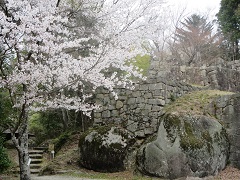
苗木城の石垣 Stone Walls of the Naegi Castle Ramparts
The outstanding characteristic of the castle complex is how it makes use of the natural granite boulders of the mountain in conjunction with skillfully built stone walls. At sites like the Oyagura Tower, the stone walls hug the natural rock formations beneath them. Different parts of the complex present examples of the various stone wall techniques used throughout the history of the castle. Postholes and indentations carved into the large rocks show how the support struts of the gates and towers were fashioned to fit into and grip the uneven surfaces.
Large stone walls have been a common feature of Japanese castles since the Azuchi-Momoyama period (1573–1600). Until then, most castles were wooden fortifications with earthen embankments and moats.
Four kinds of stone walls constructed in different time periods can be seen around the castle grounds.
Nozura-zumi (fieldstone method)
In this method, natural fieldstones of various sizes are piled up to create a wall with a mostly straight slope. This technique was often used during the Sengoku period (also known as the Warring States period; 1467–1568), a time of constantly shifting alliances and rivalries among local warlord-led families. Although the stonework may seem unsophisticated, these types of stone walls are very durable. Good examples of this method can be seen at Watagura Gate and Genkanguchimon Gate.
Uchikomi (roughly dressed stone walls)
A second type of wall is made by filling in the gaps between roughly dressed larger stones with smaller ones. These walls have a curvilinear upward slope, gradually growing steeper near the top. Examples can be seen at Kitamon Gate and Oyagura Tower.
Kirikomi (finely dressed stone walls)
The third type is a smooth-faced stone wall made by finely dressing (kirikomi) the stones with a chisel. This creates a neatly fitted stone wall without gaps. This technique was common during the mid-Edo period; the Oyagura Tower and the main keep provide good examples.
Tanizumi (diagonally stacked stone walls)
In the fourth method, roughly dressed facing stones are set diagonally, creating V-shaped lines. The next row of stones are set into these Vs. This was a popular technique that was also used in road construction until the Showa era (1926–1989). These types of walls can be seen near the foot soldier headquarters and along the path to the ninomaru (second enclosure).
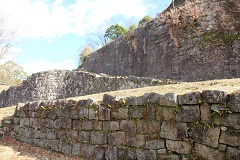
苗木城跡からの眺望 Scenic Views from Naegi Castle Site
The following sites are popular at the castle for their striking vistas.
1. Castle Observation Tower
The view south from the observation tower includes the city of Nakatsugawa, the Kiso River, traces of the historic Nakasendo highway, and Mt. Ena, which was named one of the 100 most famous mountains of Japan.
2. The Kasagiyagura Tower
This site where a watchtower once stood commands a view of Mt. Kasagi (1,128 m).
3. Monomiyagura Tower
This tower, which once stood on the cliff facing the Kiso River, commands a panorama of the mountains around Nakatsugawa as well as the majestic Shiroyama Ohashi Bridge, completed in 1984, which crosses the Kiso river just west of the castle.
4. Sengoku Well
The well is at the bottom of the path leading to the Castle Observation Tower. From this spot, the Oyagura Tower, which is especially impressive in autumn when surrounded by autumn foliage, can be seen to the west. The path continues to the right, up to the site of the main keep (honmaru)
5. Foot soldier Headquarters
One of the most popular places to view the castle is the foot soldier headquarters at the base of the fortress. From there, visitors get an exceptional view of the mountain’s summit where the main keep once stood, with Mt. Ena in the background.
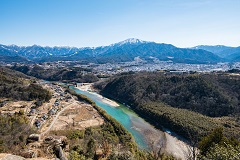
This English-language text was created by the Japan Tourism Agency.
(この英語解説文は観光庁の地域観光資源の多言語解説整備事業で作成しました。)
この記事に関するお問い合わせ先
商工観光部観光課
電話番号:0573-66-1111(内線4272・4273)
メールによるお問い合わせ







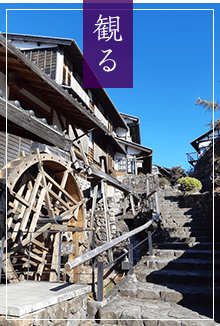
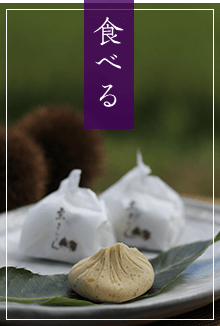
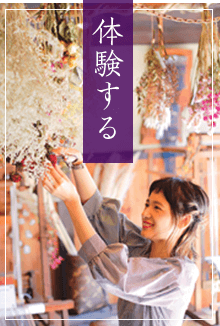
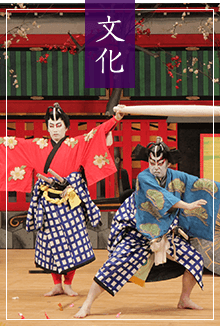
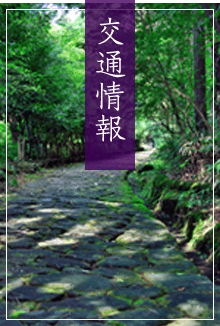
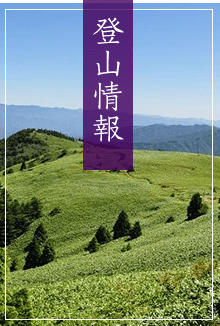
更新日:2025年03月05日